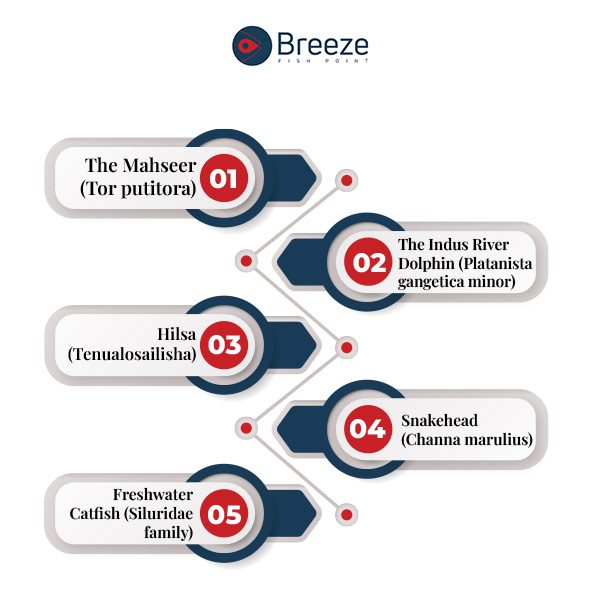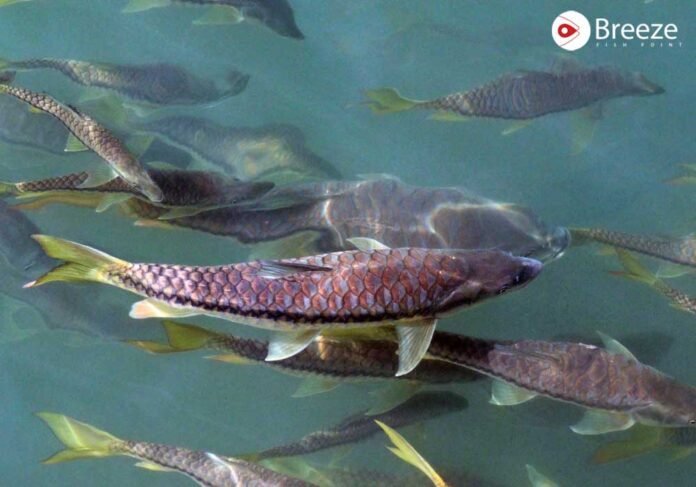Fish produced in Pakistan include Labeo, Catla, Calbasu, Rohu, Megalobs, Mrigal, Brown, Silver carp, Halwa, Boal, Modi, Butterfish, Tilapia, Koral, Sardine, Anchovy, Bombay duck, Mackerel, Tuwari, Pomfret, Shrimp and Squid. However, several difficulties affect the mentioned ecosystems and jeopardize the existence of several fish types in Pakistan.
The risks connected with fish from threatened species in the country have emerged in recent years, which is why the issue of their preservation is becoming more significant in Pakistan. Here is the knowledge regarding endangered fish species in Pakistan, factors contributing to their decline, and steps that are taken to save and preserve these species.
The Endangered Variety of Fish in Pakistan
Pakistan’s diverse fisheries resources include 193 freshwater fish and over 100 marine fish, found in various environments like rivers, lakes, seashores, and mangrove swamps. These vital biological resources support fishery businesses, provide food for families, and balance the food chain.
However, some species, like the Indus River Dolphin, Mahseer, and Hilsa, are threatened by human activities and environmental degradation.
Various Types of Fishes Endangered In Pakistan

1. The Mahseer (Tor Putitora)
The Mahseer is considered to be a good fish from the riverine areas of Pakistan and also it is identified as the “King of the River.” This freshwater fish is caught from rivers in Khyber Pakhtunkhwa and some parts of Punjab and has been severely affected by habitat loss.
Hydroelectric power and water pollution particularly through the construction of dams have affected its annual migratory and breeding patterns and caused its population to reduce. Originally common in the rivers of Pakistan, it has greatly nearly suffered extinction.
2. The Indus River Dolphin (Platanista Gangetica Minor)
Despite being classified under the dolphins sub-group of animals this particular type heavily relies on fish and therefore acts as an indicator of fish stock. The Indus River dolphin locally called Bhulan is one of the endangered species of the world and is now found only in a small population of 1800 in the wild.
Due to river fragmentation by dams and barrages, pollution, and water deficit, this same dolphin is under threat. Because the Indus River dolphin is confined to the Indus River system, both the species and its food source, the fish, are endangered.
3. Hilsa (Tenualosa Ilisha)
The Hilsa, known as the “Queen of Fish” in many different areas like Pakistan and South Asia this fish is much appreciated. This migratory species travels between the sea and the rivers mainly in the Indus Delta region to breed. But currently, overfishing, pollutions, and construction of the dams hinders their migration hence disturbing their production cycle.
Hilsa fish stocks have become depleted so badly that it has been listed as an endangered species in Pakistan.
4. Snakehead (Channa Marulius)
5. Freshwater Catfish (Siluridae Family)
Factors of Decline of Fish Populations
- Overfishing: Fish consumption in their own countries and exported to other countries have put pressure on fishing which has endangered many fish species. Sometimes, the implemented methods like, nets with a smaller mesh size harvest young fish that do not have the chance to reproduce.
- Habitat Degradation: Factories pollute rivers and seas, plastics and other wastes are washed into the waters, and rivers are poisoned with pesticides and fertilizers. They prey on or modulate resources on which fish depend and they consequently lead to a reduction in fish population.
- Water Flow Alteration: Any fish, particularly the migratory species like Hilsa and Mahseer require free and continuously flowing water for breeding; barriers hamper their way to the breeding sites which are mandatory for further reproduction of fish.
- Climate Change: High water temperatures, unpredictable monsoons, and alterations in water distribution have created challenges in aquatic biology. Warming of waters decreases the dissolved oxygen levels that exert stress and increase diseases among fish populations.
- Invasive Species: When species are introduced into the waters of Pakistan, they may exert higher pressure on the resources than native fish. These foreign species can reproduce rapidly outcompeting the ecosystems or help their native counterparts struggle.




